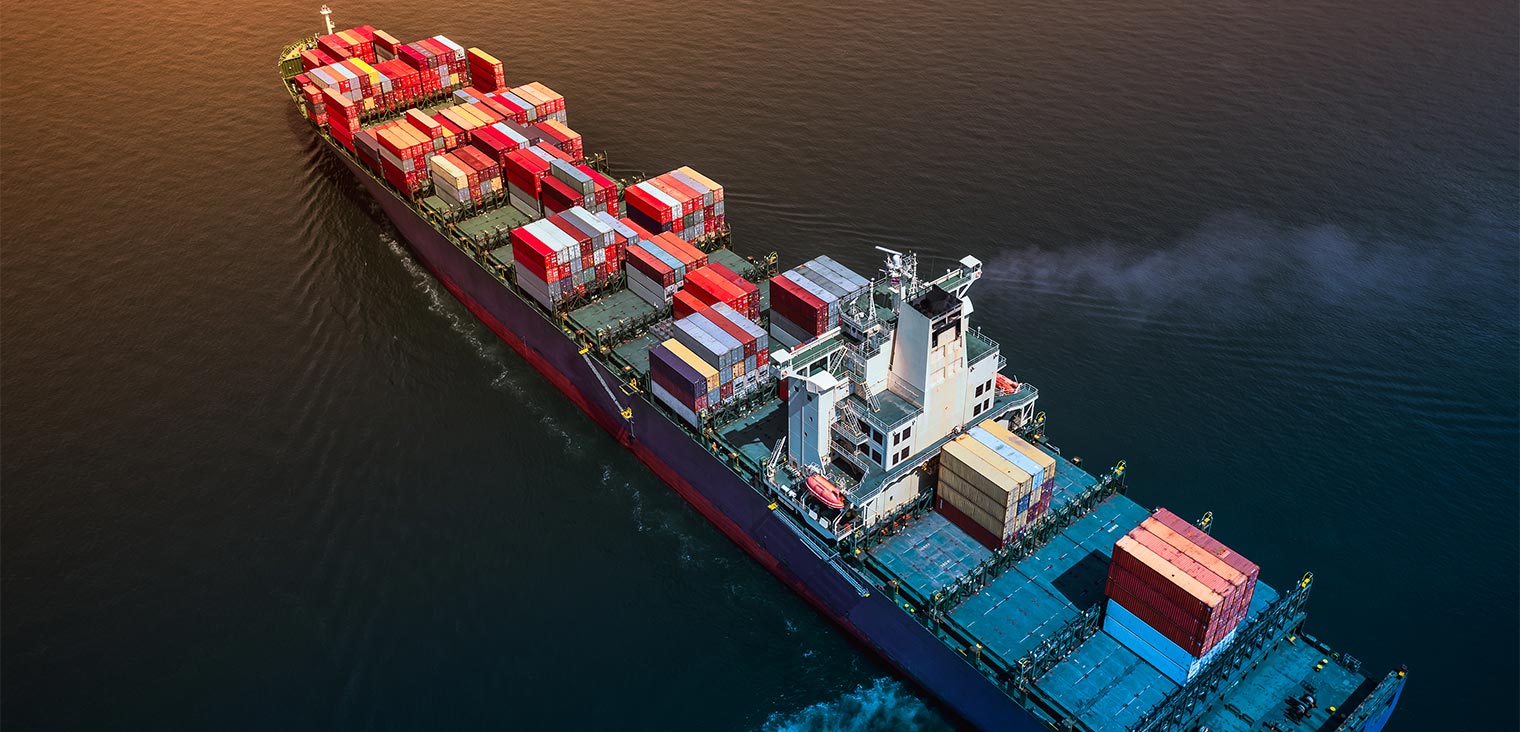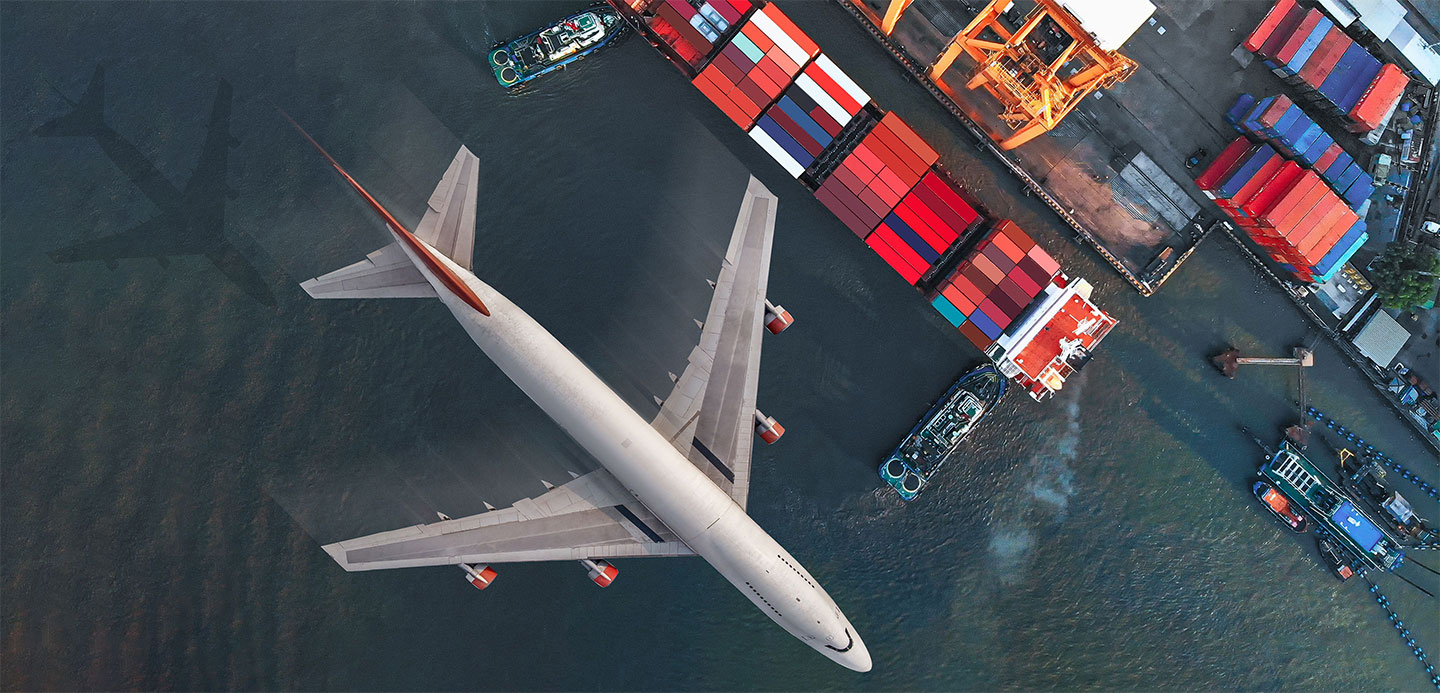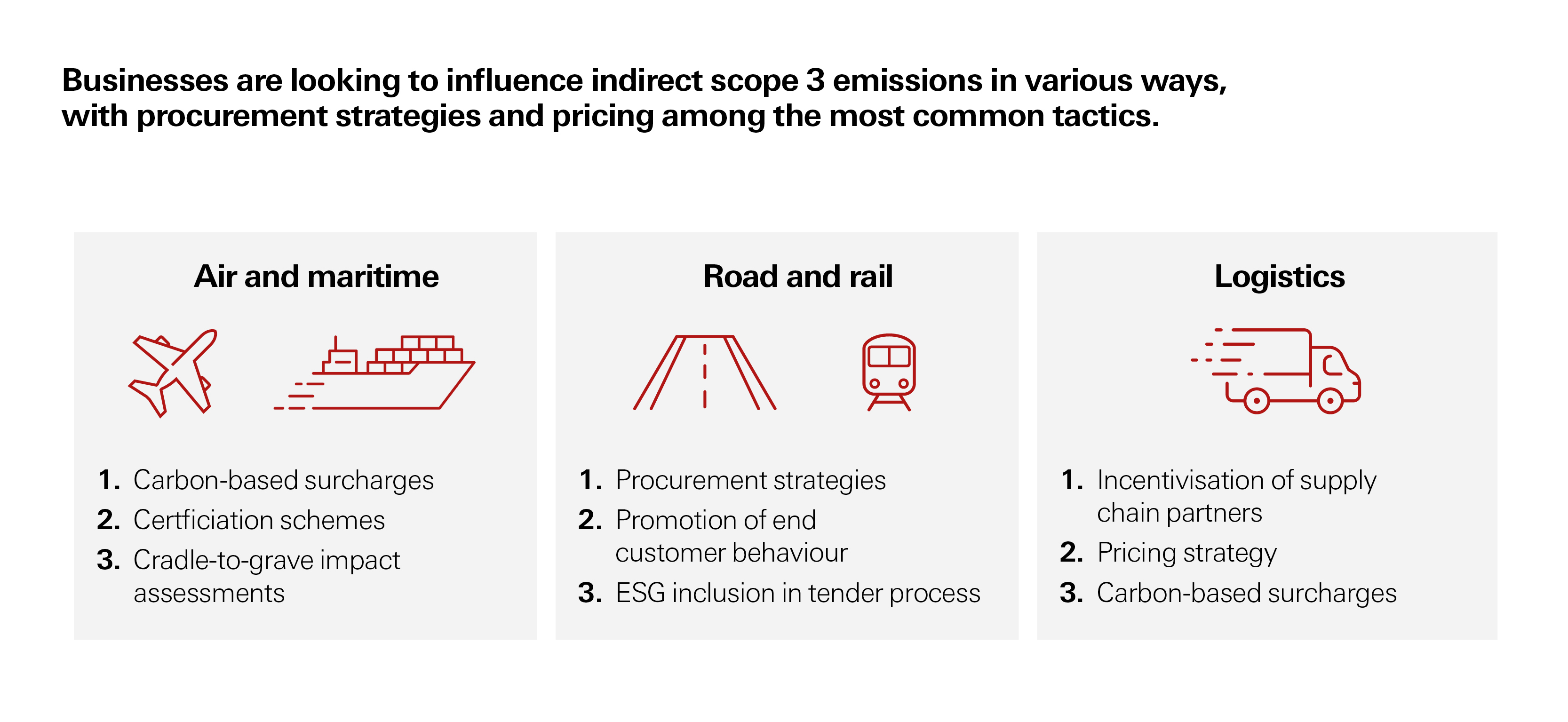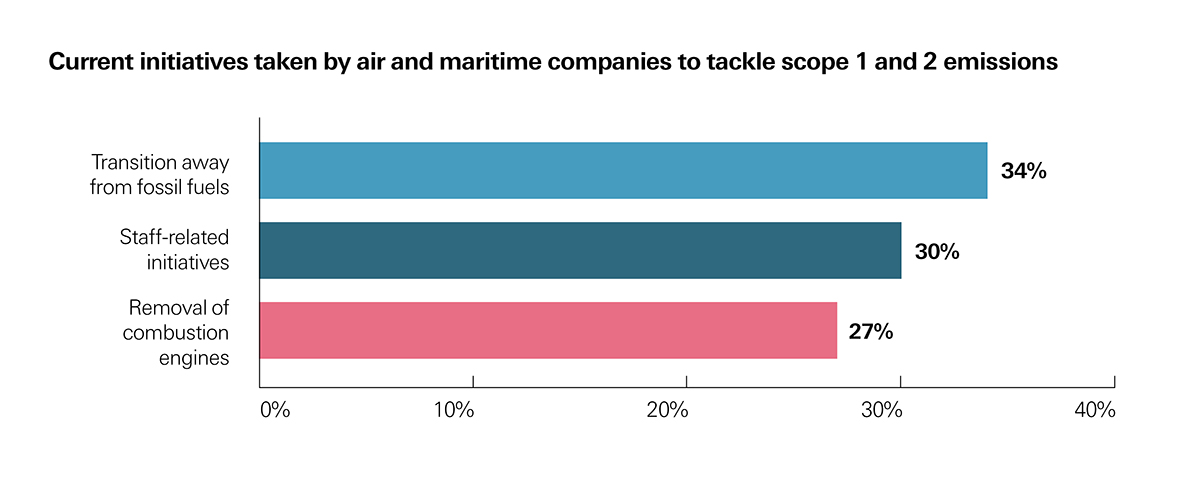- Article

- Infrastructure and Sustainable Finance
- Sustainable Supply Chain
- Transition to Net Zero
Steering a course to net-zero shipping
A push for transparency around the climate impact of global supply chains is driving demand for emissions data in maritime shipping. How will this affect the industry, and how are companies responding?
International shipping accounts for around 90% of global trade and 3% of world emissions. It is almost exclusively powered by heavy fuel oil and marine diesel – residual distillates of crude that are low-cost, energy-dense and can be readily bunkered. This makes decarbonization of the sector particularly challenging. Ships and shipping operations have become more energy efficient over time,1 however the clean fuels needed to reach net-zero are still in early stages of development. The International Maritime Organisation’s current target – of halving emissions by 2050, rather than eliminating them entirely – reflects the scale of the challenge ahead.
Shipping companies, however, understand the need for action and are raising their ambition. In a recent survey for HSBC’s Transition Pathways programme, 87% of companies in the maritime and air sector ranked the transition towards net zero as one of their top three priorities over the next 12 months.
The International Council on Clean Transportation (ICCT) suggests that the shipping industry can chart a course towards sizable emissions reductions through a combination of operational changes, efficiency improvements, use of sustainable biofuels, and zero-emission fuels and technologies.2
With a growing number of shipping customers pursuing their own decarbonisation goals, vessel owners and operators are finding their emissions are in focus. We look at how greater transparency around the impact of ocean transport is setting the direction for the shipping industry.
What does the focus on supply chain emissions mean for shipping?
With so much of international trade dependent on ocean transport, decarbonisation of shipping is a crucial element of any net zero supply chain. Growing focus by a variety of stakeholders of supply chain emissions is becoming a powerful pull factor, as shipping customers step up demands for action.
Cargo Owners for Zero Emission Vessels (CoZEV), for example, brings together several multinational companies, including Amazon, IKEA and Unilever, with the aim of using only zero-carbon ocean freight transport by 2040.3 Investors, financiers, employees and the general public are also pressing for change.
Logistics companies are also on board. DHL, among others, is allowing customers to select routes powered by sustainable marine fuel.4
HSBC’s Transition Pathways research highlighted the steps logistics companies are taking to tackle scope 3 emissions – which include transport-related emissions in their value chain: 44% are using procurement policies, and 48% are incentivising their business partners.
Regulators are also turning up the heat. The European Union announced a preliminary agreement in November last year to extend its Emissions Trading System to cover shipping. Under the plan, starting from 2024, ship operators would have to pay for the greenhouse gas emissions generated during their voyages to, from and between EU ports.
As the first system to directly charge international shipping companies for their emissions, the EU’s carbon trading scheme sets an important precedent. It will incentivise innovation and accelerate the adoption of new, clean technologies.
|
"Ship owners and operators will increasingly need to be transparent about their climate impact and the actions they are taking to reduce emissions."
How can data drive change in the shipping business?
As shipping companies pay more attention to their impact on the climate, they are finding that accurate emissions data is a powerful tool for engagement and an enabler of further action.
Disclosing this kind of data demonstrates a commitment to decarbonisation and may allow shipping companies to access sustainable finance at preferential rates. Hong Kong-based shipping company SITC International, for instance, has committed to meet certain sustainability metrics under a sustainability-linked loan (SLL) from HSBC.5
Technology companies like Windward see an opportunity for data to serve as a catalyst for a range of transition initiatives. With reliable emissions information, for example, shipping companies can charge a premium for offering greener services and use the proceeds to fund investments in more efficient vessels or alternative fuels.
Data is also likely to have an impact on vessel valuations. From 2023, all ships need to report energy efficiency and carbon intensity data under the IMO’s new certification scheme, with ratings to be issued from 2024. Ships with the lowest carbon intensity ratings will be at risk of becoming stranded assets.
“Investors and financial institutions are increasingly looking for emissions data to track the impact of their own portfolios,” adds Connor. “Companies that can show progress through credible and comprehensive reporting, linked to robust KPIs, may be rewarded with a ‘green premium’ and improved access to capital, providing a financial incentive for companies to invest in carbon efficiency.”
Initiatives that fit
Many large shipping companies have now set emissions strategies. Maersk, the world’s biggest container shipping company, is among the most ambitious. It has set a net-zero emissions target for 2040, committed to reduce emissions per transported container by 50% between 2020 and 2030, and introduced a policy that ensures all its new vessels that can run on more sustainable fuels e.g green methanol.6
Others are exploring onboard carbon capture to be stored later onshore, and the electrification of smaller vessels as well as fuel economy measures such as hull cleaning to reduce drag, speed and route optimisation, and the installation of solar or wind auxiliary power for onboard accommodation.
In HSBC’s Transition Pathways research, the transition away from carbon-based fuels ranked as the top climate initiative being pursued by companies in the maritime and air sector.
What are the hurdles to alternative fuels?
A recent analysis by the Getting to Zero Coalition – a group jointly created by the Global Maritime Forum, Friends of Ocean Action and the World Economic Forum – concluded that a prerequisite for the international shipping industry to reach net zero by 2050 is for zero-emissions fuels to constitute 5% of the total fuel mix by 2030.7 That 5% threshold is viewed as a tipping point that could establish sufficient economies of scale to take adoption to more than 90% by the mid-2040s.
There is still a long way to go before the industry can bulk adopt alternative fuels. It is not just the large-scale production of zero-carbon fuels, but also the refuelling network to distribute them, and the ship technology to accommodate them says the International Chamber of Shipping (ICS), the sector's primary trade association. Of the cleaner fuels, sustainable biofuels and green or blue hydrogen and their derivatives such as ammonia and methanol, show the most promise.
These cleaner fuels are much more expensive than existing heavy fuel oil and some estimates suggest it may not be until 2040 until they are price competitive, even without considering the infrastructure changes to accommodate them.8
4 DHL: It’s all ahead full for carbon neutral ocean freight shipping
5 HSBC: Achieving new milestones in green shipping – SITC International Holdings Company Limited
6 Maersk continues green transformation with six additional large container vessels
7 WEF: This new strategy is paving the way for net-zero shipping
8 S&P Global: Your climate change goals may have a maritime shipping problem
For HSBC’s Transition Pathways survey, HSBC has worked with Kantar. The survey is not limited to or wholly-representative of HSBC’s customer base and covers 302 key financial decision makers from businesses operating in the transport sector, comprising Road and Rail (108 businesses, with Road covering freight/services and excluding autos/passenger) Air and Maritime (64 businesses) and Logistics and Delivery (93 businesses). The survey findings and responses have not been independently verified. Businesses were further identified as Freight only (148), Passenger only (49) and those transporting both freight and passenger (105).
Businesses were located across Europe (137), North/Central America (77), Asia (52) and the Middle East (36). Overall, 61 (20%) had a turnover between $5 and $10m, 101 (34%) had a turnover between $10 and $500m, 140 (46%) turnover in excess of $500m of which 65 (22%) had a turnover in excess of $2.5bn. The majority, 191 (63%) had been established for more than ten years and a further 63 (21%) for more than five years.
Data was collected through an online questionnaire and the survey ran for three weeks from 28 September to 18 October 2022.
In preparing this survey, HSBC has relied upon appropriate available data, information and responses given at the time of writing. This report should not form the basis of any third party’s decision to undertake, or otherwise engage in, any activity and third parties do not have any right to rely on it. Neither HSBC nor Kantar accept any duty of care, responsibility or liability in relation to this research or its application or interpretation, including as to the accuracy, completeness or sufficiency of it or any outcomes arising from the same.
Transition Pathways: Transport and Logistics
Explore more of the findings and insights on the transport and logistics sector.





